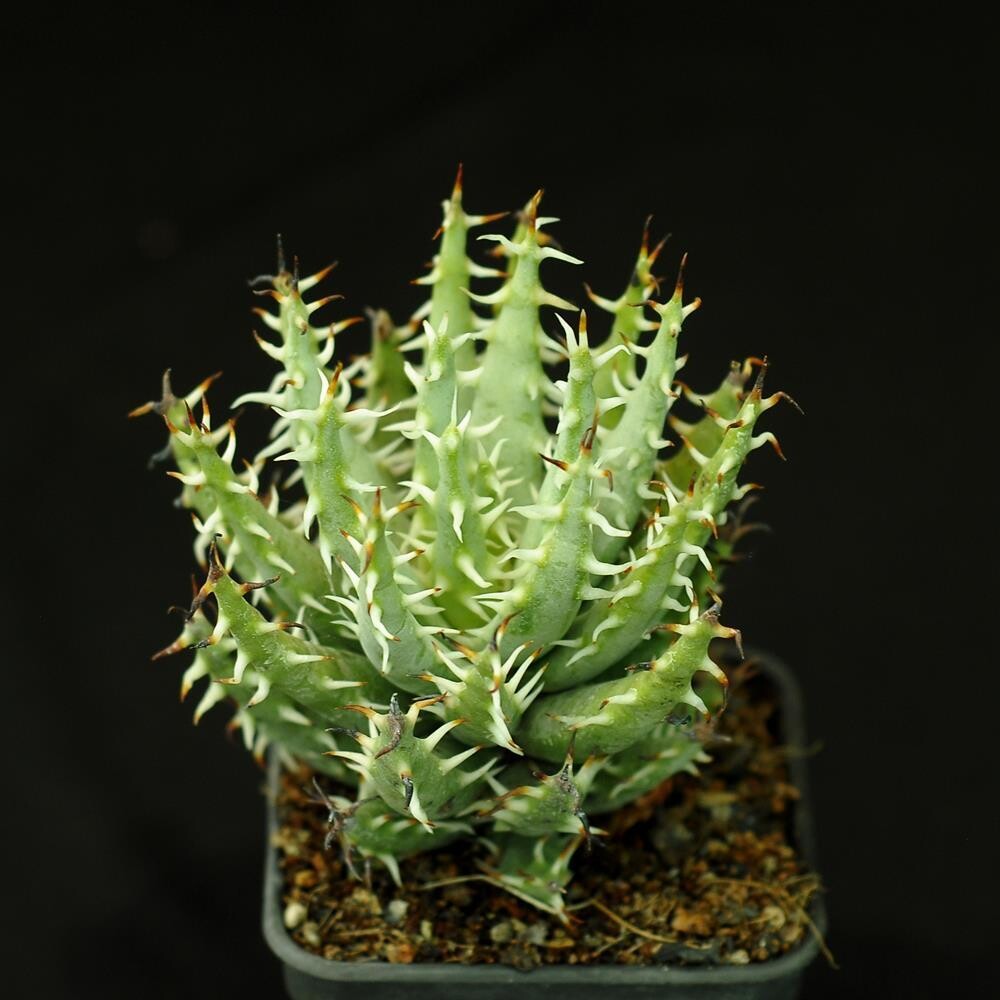Please check the Shipping Updates Page for information on shipping.
Aloe melanacantha var. erinacea
AL069A
₹850.00
In stock
1
Product Details
Plant shown in 6 cm square pot. Same size plants will be sent.
Origin : Namibia (Lüderitz district and southwards to Witputs)
Habitat: Grows in very arid areas in rocky and sandy soils on the northern hills and mountains at 900 - 1350 m. in altitude.
Ecology: Aloe erinacea produces nectar, and is therefore pollinated by sugar birds as well as winged and crawling insects such as ants which are small enough to enter the flower tube in which the nectar is stored. After fertilization, the fruit, which is called a capsule, grows quickly and splits into three parts in spring and summer. The seeds are small, up to 4 mm and slightly winged, enabling it to be dispersed by the wind. The plant in itself is very tough, and can often survive for several seasons without water, at which point the leaves turn reddish, a sign generally associated with stress.
Only recently discovered (botanically, that is) in the mid 1980's in Namibia, it seems strange that such an impressive plant could have remained unknown for so long. The plant is compact and almost never offsets (in cultivation), but in habitat it occurs in clusters of up to10 (or more) decumbent stems up to 50 cm tall, covered with old leaves bases.
Stem: Stemless even in old specimens, or short-stemmed.
Leaves: Pale grayish-green, blue-grey or brownish green (in full sun), narrow, deltoid lanceolate, biconvex, keeled, leaves are curved inwards, which gives the plant its rounded shape.
Inflorescence: Simple, densely flowered.
Flowers: Red, turning yellow, tubular in shape and droop ± 28 mm.
Blooming season: Summer, but this species it is reluctant to bloom, and for a seedling the first bloom would not be expected until the 25th year from sowing (or more)
Save this product for later
Display prices in:
INR
